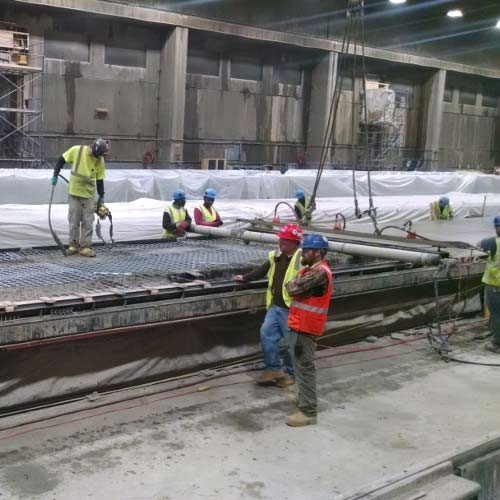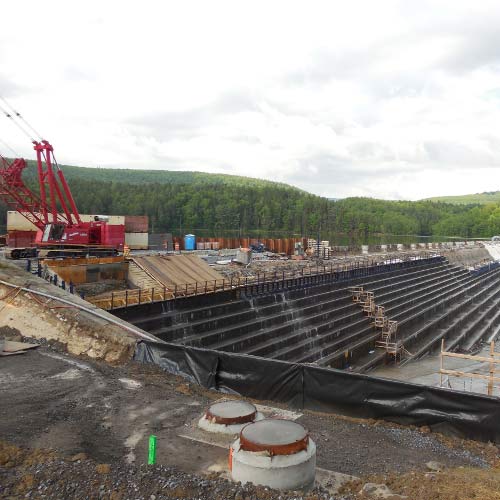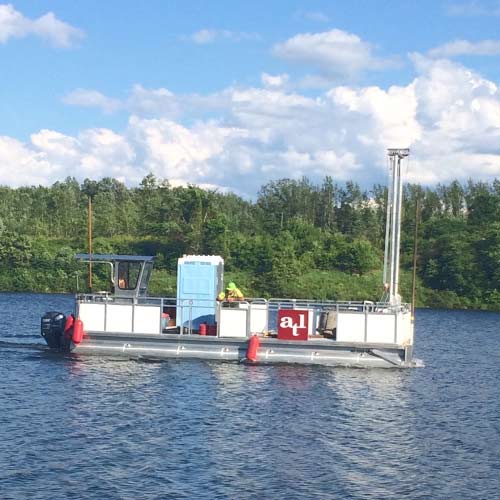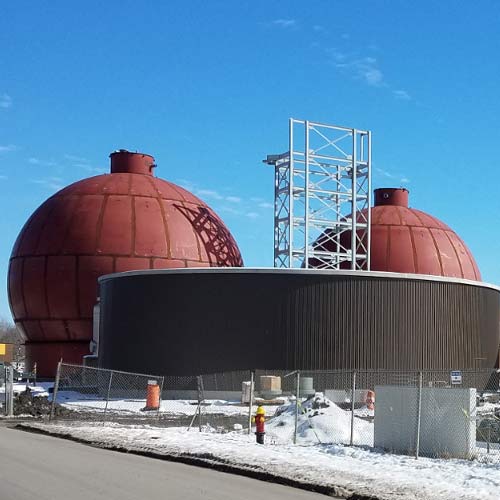Click the following link to view the PDF of this paper: Expansive Pyritic Shale – A Geotechnical Concern

Dr. Christopher R. Kelson, PhD, PG
Senior Geologist
Atlantic Testing Laboratories
Shale is the most abundant sedimentary rock type on Earth, comprising almost three-fourths of the entire sedimentary rock mass on the planet. It is a fissile, fine-grained, clastic sedimentary rock comprised of microscopic (less than 1/256 mm in size) mineral particles and phyllosilicate (clay) minerals that were deposited in very low-energy and often relatively anoxic (oxygen-poor) environments, such as deep lakes, ocean basins, and swamps. The flat, platy nature of the clay minerals enables the shale to characteristically split along flat, thin layers.
Shale is typically dark grey to black in color, due to the presence of organic carbon within its clay-rich sediment, which was subsequently shielded from decay and preserved within the anoxic conditions in which the sediment was originally deposited. This oxygen-poor environment also enabled iron (Fe) and sulfur (S), sourced from the water and surrounding sediments, to combine and form the mineral pyrite (iron sulfide, FeS2) within the shale. Pyrite is found in shales worldwide, including the Ordovician Utica Shale which extends from Quebec, Canada, to Tennessee and covers approximately 28,500 square miles.
The pyrite in the shale is stable as long as it remains isolated from oxygen in the atmosphere. When natural processes (e.g., erosion, lowering of the water table, etc.) and/or human activities (excavating, trenching, etc.) expose the pyritic shale to oxygen in the atmosphere, the pyrite in the shale naturally breaks-down via a complex series of chemical and biological reactions. This process forms other compounds, including the mineral hematite (iron oxide, Fe2O3) and sulfuric acid in the presence of water:
2FeS2 (pyrite) + 4H2O (water) + 7.5O2 (oxygen) → Fe2O3 (hematite) + 4H2SO4 (sulfuric acid)
Calcareous minerals (e.g., calcite, CaCO3), commonly also present in pyritic shale as fracture-fill and/or as an original sedimentary component, may react with water and the sulfuric acid to produce a secondary mineral, gypsum (hydrated calcium sulfate, CaSO4 * 2H2O):
CaCO3 (calcite) + H2SO4 (sulfuric acid) + H2O → CaSO4 * 2H2O (gypsum) + CO2 (carbon dioxide)
The formation of gypsum within the shale resulting from the weathering of the pyrite causes the shale to expand since the gypsum occupies more volume than its precursor minerals. This effect is more pronounced in highly-fractured pyritic shale or pyritic shale used as fill material, as more of the pyrite is exposed to oxygen in the atmosphere. Expansion of shale (containing as little as 0.1 weight percent pyrite) can cause differential heaving of the overlying ground, resulting in damage to floor slabs, foundations, and walls of structures founded on the shale.
Pyrite is present in many varieties of metamorphic, sedimentary, and igneous rocks, and expansion due to the weathering of pyrite in several rock types (e.g., shale, gneiss, schist) has been documented.
If you have a project that requires mineralogical, petrological, or geochemical characterization, ATL, a WBE certified company, has an experienced professional geologist and petrographer who is trained in the use of a variety of microanalytical techniques.
For more information, contact Dr. Christopher R. Kelson, PhD, PG at 315-386-4578, info@atlantictesting.com, or visit AtlanticTesting.com.
|
ASSOCIATED SERVICES |
 |









































